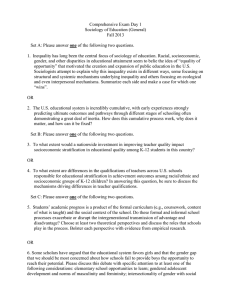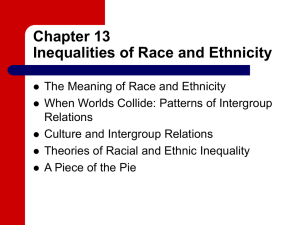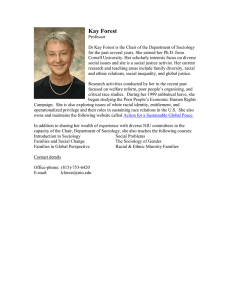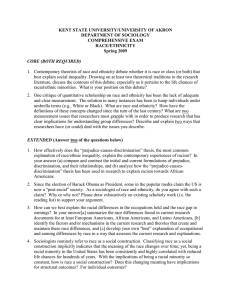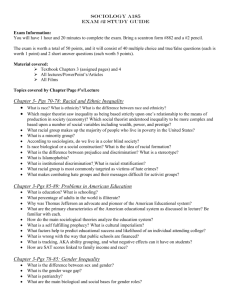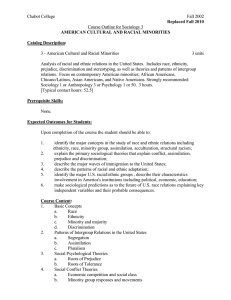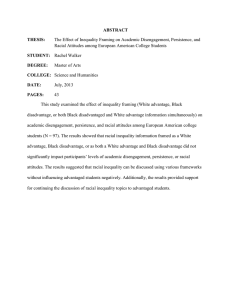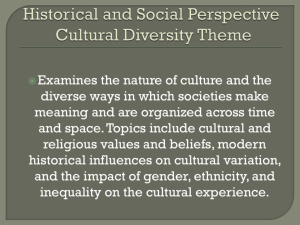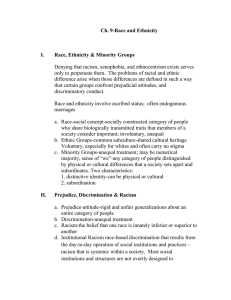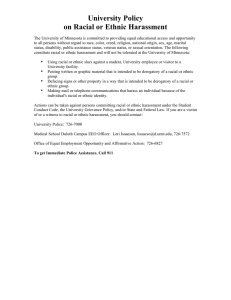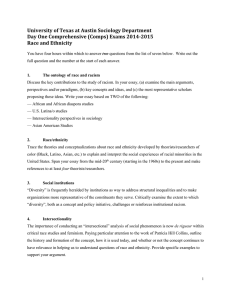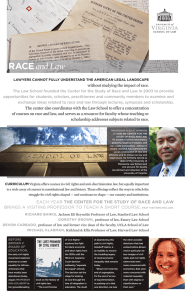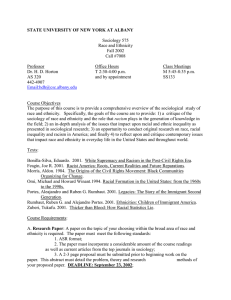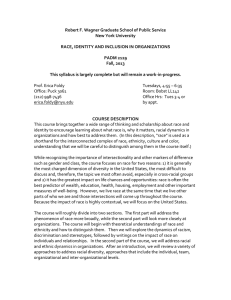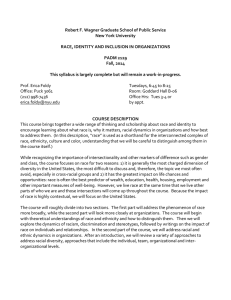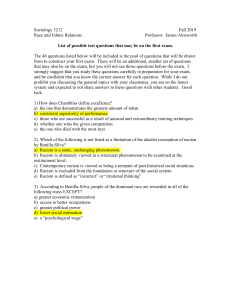KENT STATE UNIVERSITY/UNIVERSITY OF AKRON DEPARTMENT OF SOCIOLOGY RACE/ETHNICITY COMPREHENSIVE EXAM FALL 2008
advertisement
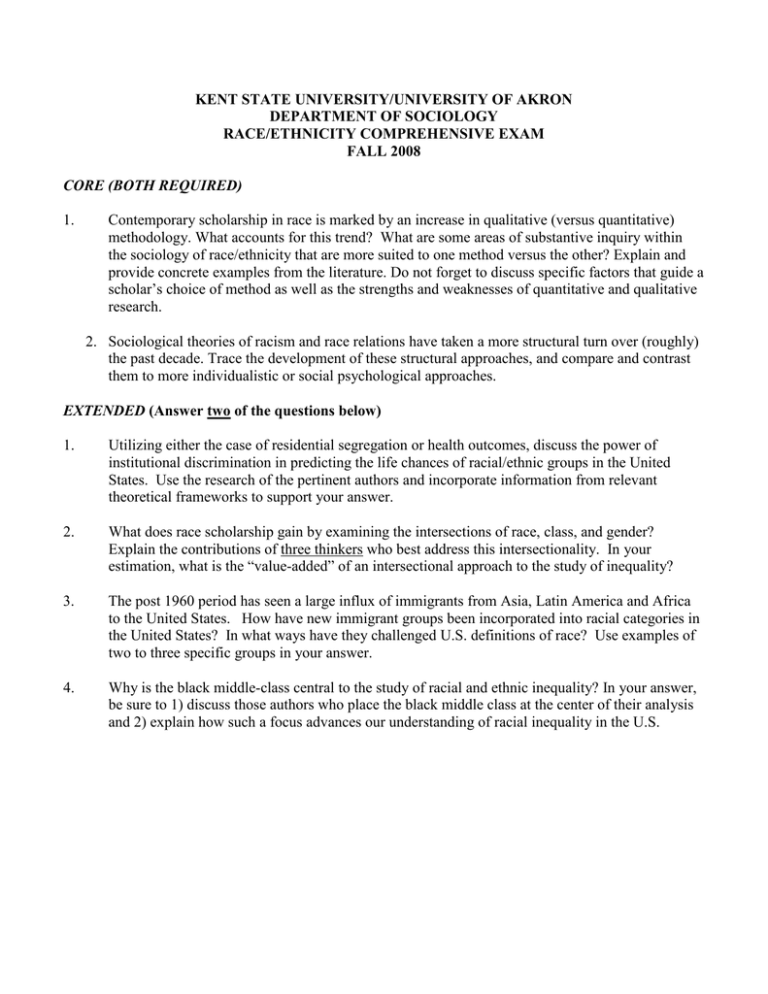
KENT STATE UNIVERSITY/UNIVERSITY OF AKRON DEPARTMENT OF SOCIOLOGY RACE/ETHNICITY COMPREHENSIVE EXAM FALL 2008 CORE (BOTH REQUIRED) 1. Contemporary scholarship in race is marked by an increase in qualitative (versus quantitative) methodology. What accounts for this trend? What are some areas of substantive inquiry within the sociology of race/ethnicity that are more suited to one method versus the other? Explain and provide concrete examples from the literature. Do not forget to discuss specific factors that guide a scholar’s choice of method as well as the strengths and weaknesses of quantitative and qualitative research. 2. Sociological theories of racism and race relations have taken a more structural turn over (roughly) the past decade. Trace the development of these structural approaches, and compare and contrast them to more individualistic or social psychological approaches. EXTENDED (Answer two of the questions below) 1. Utilizing either the case of residential segregation or health outcomes, discuss the power of institutional discrimination in predicting the life chances of racial/ethnic groups in the United States. Use the research of the pertinent authors and incorporate information from relevant theoretical frameworks to support your answer. 2. What does race scholarship gain by examining the intersections of race, class, and gender? Explain the contributions of three thinkers who best address this intersectionality. In your estimation, what is the “value-added” of an intersectional approach to the study of inequality? 3. The post 1960 period has seen a large influx of immigrants from Asia, Latin America and Africa to the United States. How have new immigrant groups been incorporated into racial categories in the United States? In what ways have they challenged U.S. definitions of race? Use examples of two to three specific groups in your answer. 4. Why is the black middle-class central to the study of racial and ethnic inequality? In your answer, be sure to 1) discuss those authors who place the black middle class at the center of their analysis and 2) explain how such a focus advances our understanding of racial inequality in the U.S.
